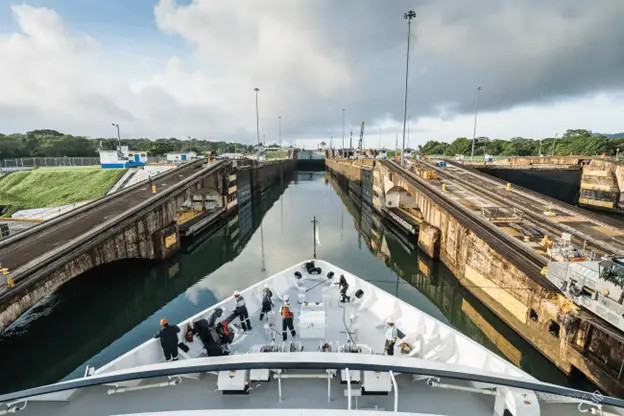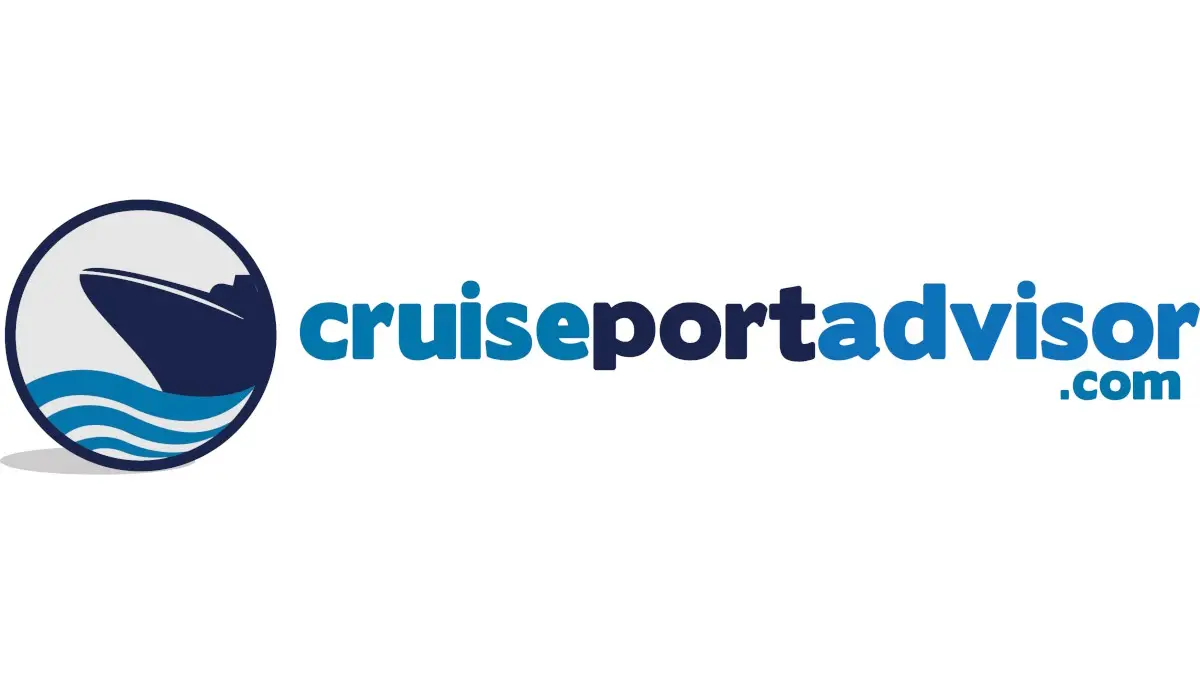 The Panama Canal is an artificial waterway that is a shortcut between the Atlantic and Pacific oceans. The Isthmus of Panama connects North and South America, and the canal cuts a 51 mile path across the isthmus. Called the “Crossroads of the World,” the canal project was initially begun by France in 1880 and led by Ferdinand de Lesseps, the builder of the Suez Canal in Egypt. After 9 years of malaria and yellow fever and with a loss of 20,000, France ran out of money to fund the project.
Taken over by the United States in 1903, they began efforts to construct a way across the isthmus on May 4, 1904. Helped by electric shovels, cement mixers, dredges and railroads, the Panama Canal opened in August of 1914 .
The Panama Canal works by moving ships from one ocean to another through an inland waterway using a series of locks. There are six lock chambers, three on the Atlantic side and three on the Pacific side that act as elevators for ships passing through. Gatun Lake, the world's largest man-made lake, holds the tremendous amount of water needed to operate the canals.
The Panama Canal is an artificial waterway that is a shortcut between the Atlantic and Pacific oceans. The Isthmus of Panama connects North and South America, and the canal cuts a 51 mile path across the isthmus. Called the “Crossroads of the World,” the canal project was initially begun by France in 1880 and led by Ferdinand de Lesseps, the builder of the Suez Canal in Egypt. After 9 years of malaria and yellow fever and with a loss of 20,000, France ran out of money to fund the project.
Taken over by the United States in 1903, they began efforts to construct a way across the isthmus on May 4, 1904. Helped by electric shovels, cement mixers, dredges and railroads, the Panama Canal opened in August of 1914 .
The Panama Canal works by moving ships from one ocean to another through an inland waterway using a series of locks. There are six lock chambers, three on the Atlantic side and three on the Pacific side that act as elevators for ships passing through. Gatun Lake, the world's largest man-made lake, holds the tremendous amount of water needed to operate the canals.
 Photo by Lewis Harrison-Pinder
The trip through the canal, from one end to the other, takes between eight and 10 hours. This is an incredibly short length of time when you consider that trips before the canal entailed traveling 13,000 miles around the hazardous Cape Horn in South America.
As your ship passes through the canal, there are three observation decks at locks along the canal. The Gatun Lock has a small grandstand seating area, and canal watchers choose these areas to watch the fascinating sight of ships passing through the locks.
Photo by Lewis Harrison-Pinder
The trip through the canal, from one end to the other, takes between eight and 10 hours. This is an incredibly short length of time when you consider that trips before the canal entailed traveling 13,000 miles around the hazardous Cape Horn in South America.
As your ship passes through the canal, there are three observation decks at locks along the canal. The Gatun Lock has a small grandstand seating area, and canal watchers choose these areas to watch the fascinating sight of ships passing through the locks.
See all Panama Canal Excursions
Good To Know
The best time to go on a cruise of the canal is after the rainy season ends in November. If you want to learn more about the incredible and fascinating story behind the making of the Panama Canal, a great read is Path Between the Seas: The Creation of the Panama Canal by Pulitzer Prize winner, David Mccullough.Fun To Watch
It can be hard to comprehend just what a marvel of engineering the Panama Canal is. And it is 108 years old! Truly a testament to the ingenuity and craftsmanship of its builders. Here are two YouTube videos that are fun to watch. The first one takes you on a ride through the canals, and the second one explains the canal in a manner that helps comprehension.Types of Cruises On The Panama Canal
In 2016, an expansion on the canal allowed for ships up to 160 feet (from the original 106 feet) to be able to navigate through the canal. This was a boon for the larger cruise ships like the Norwegian Pearl and Disney Wonder to be able to fit through.
Infographic credit: @thepanamacanal/Twitter
Full Transit Cruise
Ships that cross the full length of the canal will try to do so during the daylight hours. They will get an early morning start and pass through all six locks, Gatun Lake and the Culebra Cut. There are numerous choices when it comes to which cruise line you choose. Some of these cruise lines will offer the cruise as back-to-back cruises, and some cruise lines will offer a full transit only as a repositioning cruise, such as at the beginning or end of the Alaskan cruise season. A Panama Canal cruise with a full transit can be up to 14 days and have a more relaxed pace. You will need to be aware that cruises that transit the length of the Panama Canal will usually sail between Florida and California. This might necessitate the need for airfare into and out of two different cities which should be taken into consideration when booking a cruise. Full transit cruises may be available as part of a longer voyage like a world cruise, circumnavigations of South America or other extended cruises. Please be aware that the majority of Panama Canal cruises will visit ports on both the Caribbean and Pacific sides of the canal, and the majority of full transit cruises will not stop in Panama itself.Partial Transit Cruise
Partial transits cruises are usually shorter than a full transits at about 10 or 11 nights, and are typically round trip cruises so you will leave from and arrive back to the same port you departed from at the beginning of your trip. Partial transit cruises to the Panama Canal may be part of a larger cruise of the western or southern Caribbean. The cruise ship will typically pass through the locks, enter Gatun Lake and then turn around and exit the same way they came in. While a partial transit cruise does not take you the full length of the canal, it does give the traveler a solid idea of the workings of the locks and the feat of engineering the canal represents.Small Ship Cruise Tours
If you want a more in-depth cruise of the Panama Canal, and Panama itself, you might want to consider a third way of traversing the area and that is by a small ship cruise. These cruises may have less than 150 passengers as opposed to the thousands that a typical cruise line might carry. These lines offer full-transit and land cruises for smaller groups and can last one or two weeks.Top Tours & Excursions In Panama Canal

Embera Indians and Miraflores Locks
Take a trip back in time and visit an authentic Embera Indian village where these indigenous people are committed to preserving a traditional lifestyle and will share the traditional values of their daily life. Discover their hospitality and see first-hand the different aspects of their culture through a display of folk dances that tell their story. The Embera are skilled artisans and produce beautiful pieces that are available for purchase as ...
- Duration: 6.5
- Activity Level: Moderate
- Wheelchair Accessibility: No
- Food: Sandwich, Fruit and Water included

Aerial Tram and Miraflores Locks
On this excursion, you will experience the Gamboa rainforest, see abundant colorful birds and butterflies while you will ascend 280 feet over 1 hour in a gondola tram to the Gamboa Observation Tower. Here you can enjoy phenomenal aerial views of the Chagres River, Gatun Lake, and the Panama Canal. Afterwards, you will make your way to Miraflores Visitor Center, a center whose exhibitions focus on the famous Panama Canal. ...
- Duration: 6.5 Hours
- Activity Level: Moderate
- Wheelchair Accessibility: No
- Food: Sandwich, Fruit and Water included

